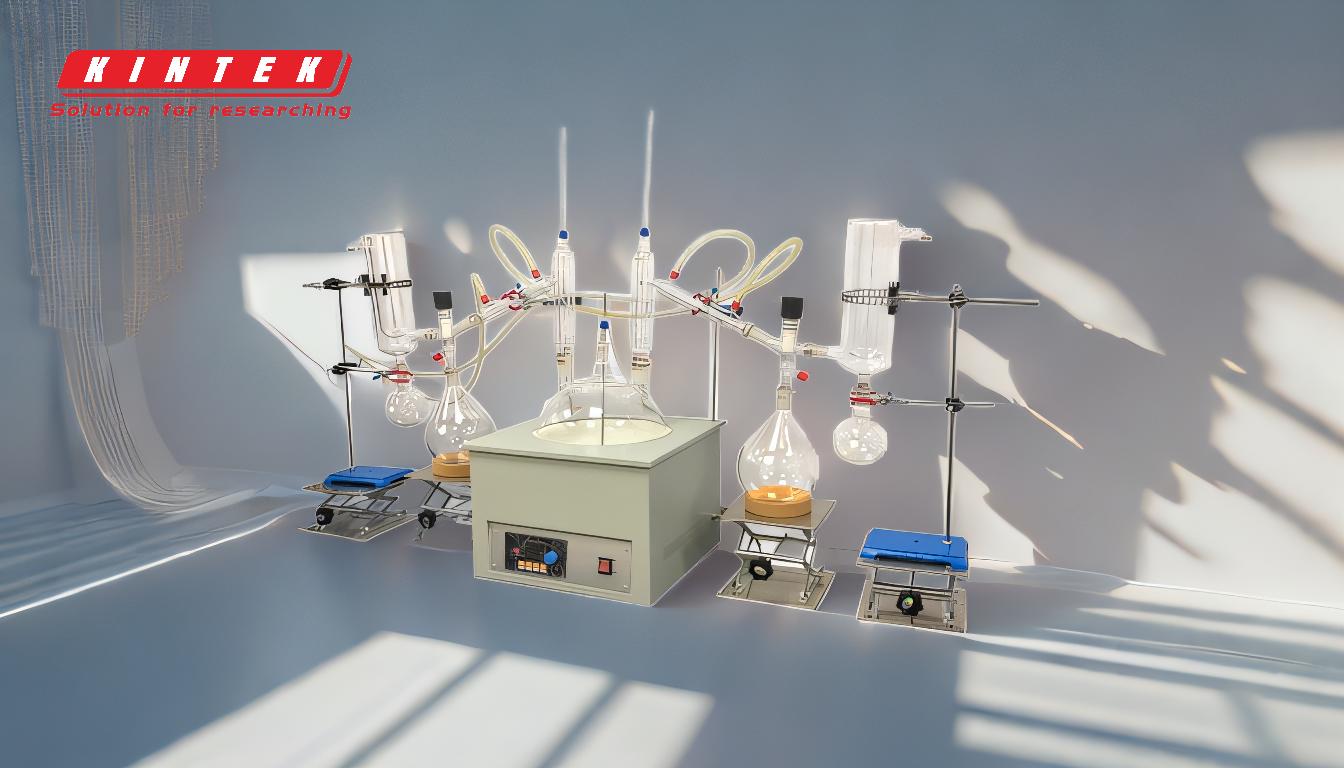Simple distillation is a fundamental separation technique used to purify liquids with significantly different boiling points. The process involves heating a liquid mixture to its boiling point, allowing the component with the lower boiling point to vaporize first. The vapor is then condensed back into a liquid and collected, leaving behind the higher-boiling components. This method is effective when the boiling points of the liquids differ by at least 70°C. The key steps include heating, vaporization, condensation, and collection, with careful temperature control and system setup being critical for success. Below, the process is broken down into detailed steps and considerations.
Key Points Explained:

-
Preparation of the Distillation Setup
- Ensure all connections in the distillation apparatus are secure to prevent leaks or accidents.
- Wrap the boiling flask and the bottom quarter of the distillation head with insulation rope (if applicable) to minimize heat loss, but leave the Vigreux column visible for observation.
- Close the valve on the manifold to allow proper airflow and pressure control during the process.
- Verify that all components, such as the condenser, collection flask, and vacuum pump (if used), are in working order.
-
Heating and Stirring
- Begin heating the mixture gradually. For example, set the heating mantle to 60°C and the stirring speed to approximately 200 RPM.
- If using an analog heating mantle, set the knob to the middle position initially. Adjust slightly if no reaction is observed.
- Monitor the temperature closely to ensure it reaches the boiling point of the lower-boiling component without overheating.
-
Vaporization and Condensation
- As the mixture heats, the component with the lower boiling point will vaporize first.
- The vapor travels through the distillation head and into the condenser, where it is cooled and converted back into a liquid.
- The condensed liquid (distillate) is collected in a separate flask.
-
Temperature Control and Separation
- Maintain the temperature at the boiling point of the first component until its concentration in the mixture decreases significantly.
- As the first component is removed, the temperature will rise to match the boiling point of the next component in the mixture.
- Repeat the process for subsequent components, ensuring each is collected separately.
-
Stopping the Distillation
- Once the reaction subsides and no more distillate is produced, stop the heat, stirring, and vacuum pump (if used).
- Open the valve to release any vacuum and allow the system to return to atmospheric pressure.
- Safely disconnect and clean the apparatus.
-
Key Considerations
- Boiling Point Difference: Simple distillation is most effective when the boiling points of the components differ by at least 70°C.
- Purity: While simple distillation improves purity, it may not achieve complete separation if the boiling points are too close.
- Safety: Always monitor the process to prevent overheating, spills, or equipment failure.
By following these steps and considerations, simple distillation can effectively separate and purify liquids with significantly different boiling points, making it a valuable technique in both laboratory and industrial settings.
Summary Table:
| Step | Key Actions |
|---|---|
| Preparation | Secure connections, insulate the flask, close the valve, and check components. |
| Heating and Stirring | Gradual heating, monitor temperature, and adjust stirring speed. |
| Vaporization and Condensation | Lower-boiling component vaporizes, condenses, and is collected. |
| Temperature Control | Maintain temperature for each component and collect separately. |
| Stopping the Distillation | Stop heat, stirring, and vacuum; release pressure and clean the apparatus. |
| Key Considerations | Boiling point difference (≥70°C), purity, and safety precautions. |
Need help setting up your distillation process? Contact our experts today for guidance and support!









